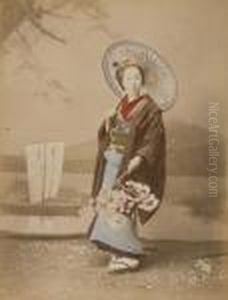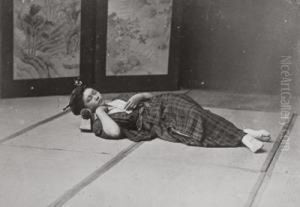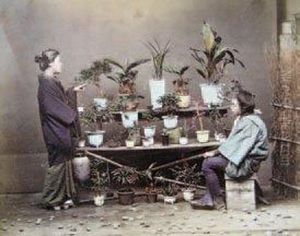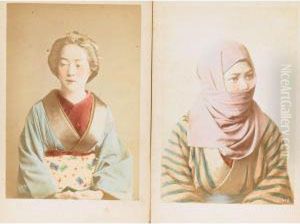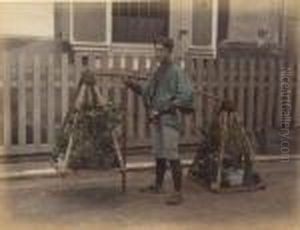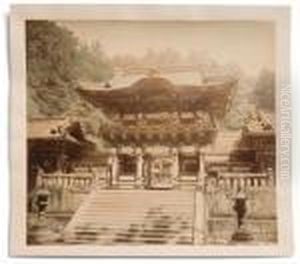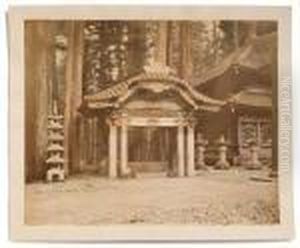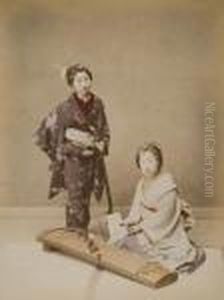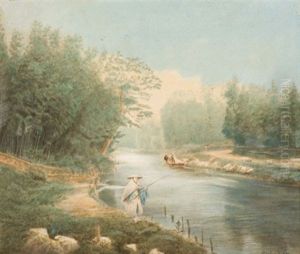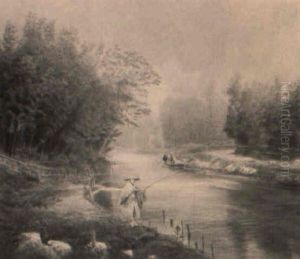Raimund, Baron Von Stillfried Und Rathenitz Paintings
Raimund, Baron Von Stillfried und Rathenitz, also known as Raimund von Stillfried, was an Austrian photographer known for his significant contribution to the field of photography in Japan during the late 19th century. Born into Austrian nobility, Stillfried served in the military before venturing into photography, a field in which he would achieve considerable acclaim. In the early 1860s, following his military service, he traveled extensively, eventually settling in Japan in 1868.
In Japan, Stillfried established himself as a pioneering photographer, capturing a wide array of subjects that included traditional Japanese landscapes, portraits of samurai, and scenes of everyday life. His work is particularly noted for its artistic sensitivity and technical finesse, offering a unique window into the culture and society of Japan during a period of significant transition from the Tokugawa shogunate to the Meiji Restoration.
In 1875, Stillfried formed a partnership with Hermann Andersen, and together they founded the Stillfried & Andersen studio, which became one of the most prominent photography studios in Japan. The studio specialized in hand-colored photographs, a technique that added a vivid and lifelike quality to their images, making them highly sought after by both local and international clients.
Stillfried's influence extended beyond his own photographic practice; he was instrumental in training a new generation of Japanese photographers, thus leaving a lasting legacy in the Japanese photography scene. Among his contributions was the mentoring of Kusakabe Kimbei, who would go on to become one of Japan's most renowned photographers.
Despite his success, Stillfried's later years saw him leaving Japan and eventually settling in Vienna, Austria, where he lived until his death in 1911. His body of work remains a valuable resource for understanding the cultural and historical landscape of 19th century Japan, as well as the early development of photography as an art form. Stillfried's photographs are preserved in various collections worldwide, continuing to be celebrated for their artistic and historical significance.
